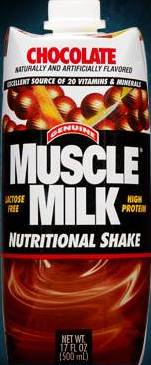Entries from October 1, 2009 - October 31, 2009
Seoul Long!

STL will be on vacation in Seoul for about ten days. I expect to be refreshed and back to my usual tricks on Nov. 2. (Photo credit: karendotcom127)
Court Finds Ex Parte TRO Not Justified in Trade Dress Case
 Plaintiff’s (left) and defendant’s trade dress: Ex parte relief not appropriate
Plaintiff’s (left) and defendant’s trade dress: Ex parte relief not appropriate
Ruiz Food Products, Inc., filed suit in the Eastern District of California against Camino Real Foods, Inc., alleging that Camino’s burrito packaging is confusingly similar to its own.
Ruiz immediately moved for an ex parte temporary restraining order. On Oct. 2, the court denied the motion, finding that the parties’ attorneys had been in contact about the dispute, so there was no need to exclude Camino’s attorney from the process. The issue, the court found, was better suited for a motion for preliminary injunction where both parties could actively participate.
“Under Rule 65(b), a court may issue an ex parte temporary restraining order only if: (1) it clearly appears … that immediate and irreparable injury, loss, or damage will result to the applicant before the adverse party or that party’s attorney can be heard in opposition, and (2) the applicant’s attorney certifies to the court in writing the efforts, if any, which have been made to give the notice and the reasons supporting the claim that notice should not be required. Rule 65(b)’s requirements are ‘stringent,’ and temporary restraining orders that are granted ex parte are to be ‘restricted to serving their underlying purpose of preserving the status quo and preventing irreparable harm just so long as is necessary to hold a hearing, and no longer.’
“Here, Plaintiff has not sufficiently met its burden of justifying an ex parte restraining order. From Plaintiff’s submissions, it is apparent that counsel for both Plaintiff and Defendant have been in contact with each other over the allegedly infringing trade-dress. What is missing from the application is an adequate explanation of ‘the reasons supporting the claim that notice should not be required.’ Ex parte relief is not appropriate. The Court instead will treat the motion as a request for a preliminary injunction and set a briefing schedule and hearing date.”
TROs are tough to get — especially ex parte TROs. You need to convince the court there’s good reason to exclude the other party from the process. That evidence usually is hard to come by.
The case cite is Ruiz Food Products, Inc. v. Camino Real Foods, Inc., 2009 WL 3234145, No. 09-1731 (E.D. Calif. Oct. 2, 2009).
District of Oregon Declines to Adopt Magistrate's Decision as Inconsistent
In Adidas America, Inc. v. Calmese, District of Oregon Magistrate Judge Janice Stewart recommended that the court grant Adidas’ motion for summary judgment that its use of “prove it” does not infringe defendant Michael Calmese’s PROVE IT! registered trademark but that the court deny Adidas’ motion that its use of “prove it” is not a false declaration of origin.
On Oct. 8, the district court adopted the first recommendation but declined to adopt the second recommendation as being inconsistent with the first.
The court found: “The test for whether trademark infringement has occurred is identical to the test for whether false designation of origin has occurred.
“Although the Magistrate Judge did not separately address Plaintiff’s claim for a declaration of non-false designation of origin, she did address whether a likelihood of confusion existed between the use of the phrase “prove it” on Plaintiff’s t-shirts and Defendant’s “prove it!” trademark. As noted, after considering each of the Sleekcraft factors, the Magistrate Judge found two were neutral, four weighed in favor of Plaintiff, and two weighed in favor of Defendant. The Magistrate Judge found the factors that were most important were the ones favoring Plaintiff; namely, lack of strength of Defendant’s mark, the lack of relatedness of the goods, the lack of similarity of the marks, and the lack of evidence of actual confusion. Accordingly, the Magistrate Judge concluded there was not any triable issue of fact as to the likelihood of confusion between the two marks.
“After reviewing the pertinent portions of the record de novo and Plaintiff’s Objections, the Court notes the Sleekcraft factors found by the Magistrate Judge to favor Plaintiff also are at the heart of the test for non-false designation of origin, and, therefore, the Court finds the Magistrate Judge erred when she denied summary judgment to Plaintiff on its claim for a declaration of non-false designation of origin.”
The case cite is Adidas America, Inc. v. Calmese, __ F.Supp.2d __, 2009 WL 3254348, No. 08-91 (D. Or. Oct. 8, 2009).
Ninth Circuit Affirms Injunction Against Nutritional Supplement Seller
 Plaintiff CytoSport, Inc., sued Vital Pharmaceuticals, Inc., in the Eastern District of California for trademark and trade dress infringement. CytoSport then moved for a preliminary injunction enjoining Vital from marketing, selling, advertising or promoting a liquid protein-based nutritional supplement using the name MUSCLE POWER or any other trademark confusingly similar to plaintiff’s MUSCLE MILK trademark. CytoSport (CS) also sought to enjoin Vital (VPX) from using trade dress that is confusingly similar to its trade dress.
Plaintiff CytoSport, Inc., sued Vital Pharmaceuticals, Inc., in the Eastern District of California for trademark and trade dress infringement. CytoSport then moved for a preliminary injunction enjoining Vital from marketing, selling, advertising or promoting a liquid protein-based nutritional supplement using the name MUSCLE POWER or any other trademark confusingly similar to plaintiff’s MUSCLE MILK trademark. CytoSport (CS) also sought to enjoin Vital (VPX) from using trade dress that is confusingly similar to its trade dress.
On May 6, Judge Frank Damrell, Jr., granted CytoSport’s motion. The court concluded: “Plaintiff has demonstrated a reasonable likelihood of success in demonstrating that defendant’s use of its MUSCLE POWER® trademark and trade dress infringes plaintiff’s MUSCLE MILK® trademark and trade dress, that plaintiff is likely to sustain irreparable harm to its reputation and customer goodwill absent preliminary relief, the balance of equities tips in plaintiff’s favor in light of its longstanding reputation in the community and use of the MUSCLE MILK® trademark, and the public is served by issuance of the requested injunction which seeks to avoid customer confusion in the marketplace and permits plaintiff to control its products’ reputation.”
On the trade dress issue, the court found: “The features of CS’s trade dress which have been employed by VPX include the following: (1) the package front of the MUSCLE POWER product is visually divided into three sections, top, middle, and bottom; (2) on the middle portion of the package, the word MUSCLE is prominently displayed above the second word of the composite mark in all capital letters in a bold, block-letter, white-colored font on a dark background; (3) on the lower portion of the package a depiction of a swirled colored liquid appears reflecting the color of the product in the package, i.e., brown for chocolate, red for strawberries and cream, etc.; (4) on the top portion of the package, an identification of the flavor in words and a picture appears; (5) on the side of the package, the MUSCLE POWER mark is printed in bold, block-letter font and oriented so the consumer can read the words from the bottom to the top of the package; and (6) VPX uses the Tetra-Pak packages which are created by printing a label directly on to a flat piece of packaging material that is subsequently folded onto a three-dimensional carton that can be filled with the product.
“Defendant’s efforts to expose trivial distinctions between the two marks are unimpressive. VPX points to only subtle differences between the way the marks are used, such as the red outline around its brand name, as opposed to plaintiff’s black outline, and the ‘splash’ on the bottom of its package instead of plaintiff’s ‘swirl.’ These minor differences are ‘trivial distinctions’ especially when viewing the products in full, as they appear in the marketplace. Seen in this light, the marks are glaringly similar.”
Vital appealed these findings. On Oct. 13, the Ninth Circuit affirmed in short order, stating: “We conclude that the district court did not rely on an erroneous legal premise or abuse its discretion in concluding that Cytosport was likely to succeed on the merits and showed a strong likelihood that it would suffer irreparable harm if the preliminary injunction did not issue. Accordingly, we affirm the district court’s order granting the preliminary injunction.”
The case cite is CytoSport, Inc. v. Vital Pharmaceuticals, Inc., 2009 WL 3287630, No. 09-15969 (9th Cir. Oct. 13, 2009).
Attending the International Association of Korean Lawyers Annual Conference?
If you’re planning to attend the International Association of Korean Lawyers’ annual conference next week in Seoul, please let me know. I’ll be there and would love to get together!
